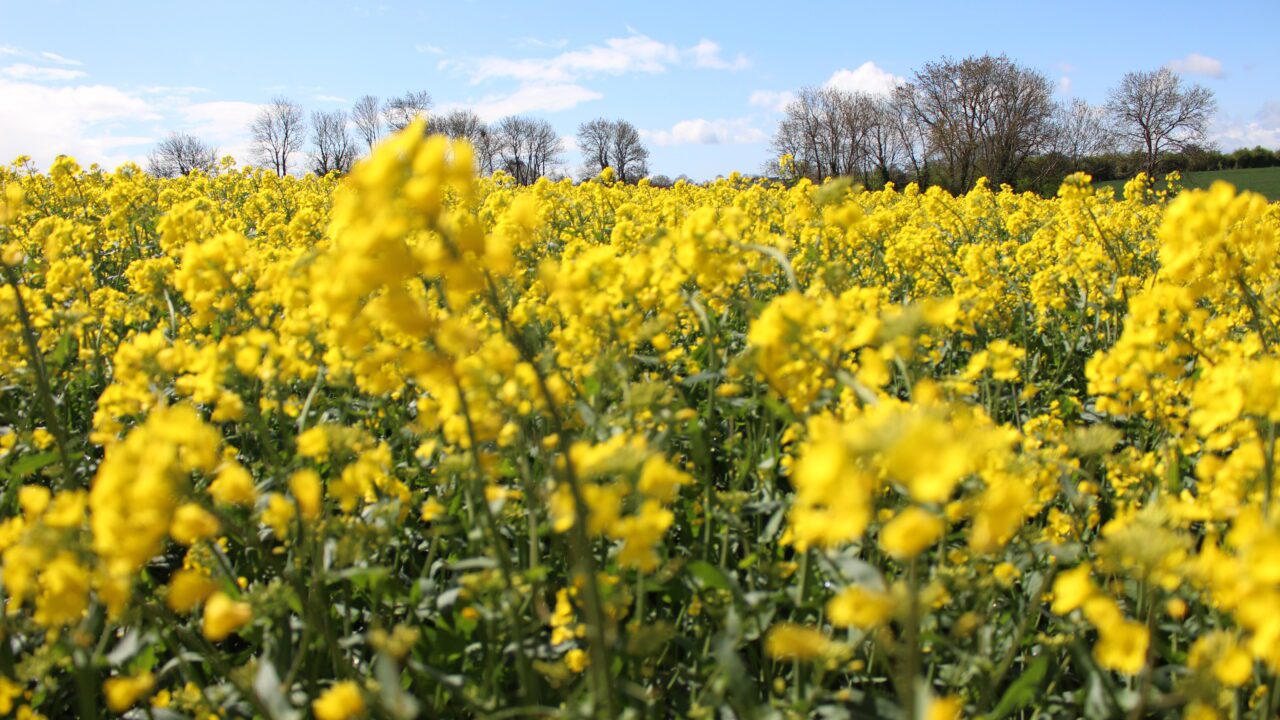Teagasc estimates that Ireland’s oilseed rape (OSR) area is down 25% year-on-year; 15,000ha relative to the 2022/2023 figure of 19,000ha.
“This has nothing to do with economics,” tillage specialist, Shay Phelan explained.
“Many growers could not physically get OSR planted because of the extremely late winter and spring barley harvests.
“In addition, straw lay on the ground on many farms for up to a month after harvest because of the very wet weather. This was another factor that hindered the planting of OSR crops,” he added.
Oilseed rape
According to Phelan, those OSR crops that were panted early are looking well.
“Full ground cover has now been achieved in many instances,” he said.
“This should help restrict pigeon grazing over the winter months. Growers are reporting low levels of grazing damage by slugs, despite the very wet weather of late.
“And phoma pressure seems to be quite low now. All of this is good news for OSR growers. However, later sown crops have a bit of catching up to do.”
Turning to the planting of winter cereal crops, the Teagasc representative confirmed that matters are on a knife edge.
“Merchants are confirming that sales of winter barley seed are down slightly, year-on-year,” Phelan continued.
“Heavy rains yesterday in the south of the country have put back planting back in that part of the world for at least a couple of days. And it’s the same in the north-east.”
Some growers may take the ‘opportunity’ to plough ground now in anticipation of ground drying out over the next few days.
“This is a very risky strategy. If we do get more rain over the coming few days, it takes ploughed fields that bit longer to dry out,” Phelan added.
Winter planting
He also confirmed that the cut-off dates to sow winter barley in most areas of the country are fast approaching.
“And this is the case for growers that are committed to min-till. There is evidence to show that switching to hybrid barley varieties as the planting season progresses is a worthwhile option,” Phelan said.
“These are more tolerant of wetter and heavier planting conditions.”
Teagasc research has confirmed October 15 as the optimal planting date for winter wheat crops.
“And we are getting close to this date now. Later sowing is an option, but it comes at a cost, higher seed rates being one of them,” Phelan added.
The Teagasc representative indicated that early sown crops of winter barley are looking well.
“But the threat of Barley Yellow Dwarf Virus has still to be considered,” he stressed.
“Some growers opted to plant varieties, such as Joyeau and Molly, which come with claims of tolerance to Barley Yellow Dwarf Virus.
“However, the disease can be caused by several viral strains. The problem is that we don’t yet know how many of the strains of the virus these specific barley varieties are tolerant of.
“In cases where conventional barley varieties have been planted out, the standard advice is to spray crops with an insecticide at the four-leaf stage,” Phelan concluded.
